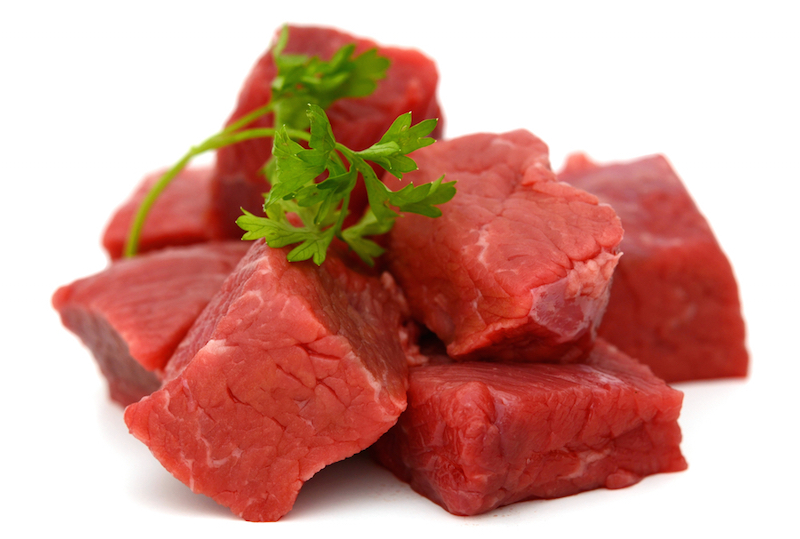The beef brand is almost generic.
I have not eaten beef in 16 years.
If I go into a restaurant and announce to the waiter that I do not eat beef, they do not suggest the chicken or fish but nearly always the salad.
A waiter is a kind of specialist in food communication. They know the names of things, and they know what “beef” means. And yet they give it a broader meaning.
“Beef” is a brand that has achieved generic status. The beef brand is almost like Kleenex or Post-it Notes. If I were to say that I don’t want Kleenex, I am not likely to be offered another brand of facial tissue but rather something from another category altogether—a cough drop perhaps.
Beef is symbolic of meat and so when I block it, they leap to another brand entirely: Vegetarianism.
For these waiters “beef” is not being interpreted as meat from a cow but rather as the more generic and simplified “meat.” Beef is symbolic of meat and so when I block it, they leap to another brand entirely: Vegetarianism. “If he does not eat beef, he must be a vegetarian.” These two brands are differentiated enough and simple enough to make it easy for the waiter to move between them, A to B.
The mental energy required to step from beef to the strongly differentiated notion of vegetarianism is actually much less than is required for the more surgical removal of beef from the menu options. Our brains are quite keen on efficiency and this more subtle distinction between beef and other meats requires extra brain power which is in fact the brain’s definition of inefficiency. The mental transaction that goes from A to B requires fewer neurons than thinking that it’s even possible to go from A to A2.
I welcome you to try this little experiment on your own. You will find yourself forced to say, “No, just beef. I can eat other meats like chicken or fish—hell, give me the frog legs if you want.”
Are you the beef brand or its competitor?
Think about this in relation to your own brand. Where are you in this simple scheme? Am I required to spend extra mental energy to land on your Brand Idea in a sea of subtly differentiated competitors? Are you asking me to work to understand your offer? Can I clearly see the unique benefits of your beef?
It is often surprising to brands (or defacto brand managers) that the easiest explanation of their product or service is the ONLY idea that most people have about them. This lack of subtlety in people’s minds is often a surprise. It’s not that consumers are stupid or lazy, it’s just the way the human brain is designed to function. We have a nearly automated process of pattern recognition that grabs any available basic clues and then just fills in the rest. Done. Your brand is a pattern of emotion or experience formed by whatever scant information I have bothered to retain about you.
You might protest, “Our offer is complex and robust. It’s like night and day if compared to our competitors!” Well, it’s not that they cannot tell the difference. It’s more that they are not bothering to. And what looks to you so obvious—like night and day—is not really obvious at all on the outside.
In your consumer’s mind, are you really as different from your competitors as meat and vegetables? Or are you just the difference between beef and pork?
So here is the question: In your consumer’s mind, are you really as different from your competitors as meat and vegetables? Or are you just the difference between beef and pork? If it’s the latter then in all likelihood you may not be understood as clearly as you think you are, as frankly you need to be. And you could very well be losing ground to a competitor’s simpler, clearer brand offer. The differences you see may be essentially invisible from the outside. And so when decision time comes people who should know better are jumping from beef to vegetables, no thought at all of your finely roasted pork.
The remedy, of course, is clarity. The difficult task of distilling from all that you could say into what you should say to have salience in the mind of your consumer. This is the simplicity on the other side of complexity that Oliver Wendell Holmes Jr. may not have even thought of. It’s your opportunity to deeply satisfy the customer for whom you are most naturally suited.
I would not give a fig for the simplicity this side of complexity, but I would give my life for the simplicity on the other side of complexity. —Oliver Wendell Holmes
All easier said than done, or course, which is why companies like ours even exist.
Do you need an affordable way to improve your brand today?
Because we know that not everyone needs or can afford our full process, we created a guided tutorial for our foundational brand strategy tool: the Brand Pyramid. Watch the video for a preview.
For more information on this branding tutorial video series, visit here where you will find a fuller explanation and a link to a free download of the first video.
Image courtesy of Shutterstock



This offering you vegetarian dishes when you say you don’t eat beef is safer than people offering you dishes with non-beef meats when you tell them you are vegetarian … when I used to not eat meat and tell my mom and other Korean adults at dinner that I don’t eat meat, they would say, “It’s okay to eat because it’s not meat!”
The dishes usually contained pork, which didn’t mean “meat” to them.